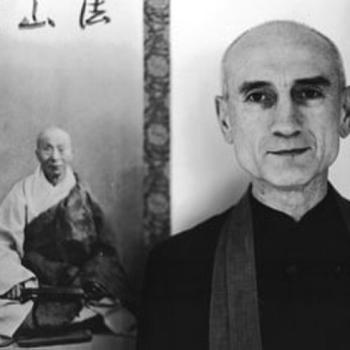
Thinking of Mother Moshan, one of the Early Zen Masters
March 8th is International Women’s Day. And, I find my thoughts turning again to women in Zen.
While the records are scant, nonetheless there are clear traces of women who were masters of the Zen way from the beginning of its emergence as a distinctive school in early Medieval China.
The first named woman Zen master is Zhongchi, one of the four principal heirs of the semi-mythical Bodhidharma. His story is the stuff of legend, literally, if you will. And with that in some ways, the weaving of a narrative.
I find it important that someone found it important when telling of Bodhidharma’s four successors that one was a woman. While Zen very much bowed to the culture that birthed it. And did its job as a formal religion in helping to preserve the traditions of that culture. Still, Zen always, always had a counter cultural thread. The whole nature of awakening described in Zen shatters norms, any norms, all norms.
In the ninth century, the “Golden Age of Zen” along with references to tea ladies, and others who spark various monk’s awakening, we hear of two named women Zen masters. Iron Grinder Liu weaves in and out of the narratives. An equal to all the male sages.
And then there’s the abbess Moshan Liaoran. She was a dharma successor to Gaoan Dayu, who in turn was an heir of Zhichang, an heir to the great Mazu Daoyi, giving her one of the more renowned pedigrees in the forming Chan tradition.
We know her by her transmitted name. Mo means summit or peak. While Shan means mountain. So, she was called the summit or the peak of the mountain. In her lifetime she was regarded as a major figure in the Zen world and is said to have led a community of five hundred monastics. She is first mentioned in the Jingde chuandeng lu (Transmission of the Lamp of the Jingde Period), one of the first collections of biographical accounts of Chan-lineage monks, compiled in 1004.
It includes a famous anecdote that would become a koan.
Guanxi Xian, a student of the renowned Linji heard of her and decided to see what he might learn. When he arrived at the monastery, the abbess had her senior monastic ask why Guanxi had come. He replied for the dharma. Satisfied she allowed him to interview her. She threw out the net, asking from where he had come?
The monk replied “From the crossroad.” The abbess responded, “Why haven’t you removed your hat?” Guanxi sat in silence for a while, then removed his hat. He asked, “What about the mountain?”
Moshan, the mountain, the peak of the mountain, replied, “that peak isn’t revealed.”
The monk responded, “Who is the master of that mountain?”
She replied, “Without the form of man or woman.”
The monk gave a great Ho! And then asked, “Why can’t it transform itself?”
The abbess replied “I’m not a fox spirit. So, why would I transform myself?”
The monk made his bows, and became her student. For three years he worked as her gardener.
Eventually Guanxi became her successor. In the thirteenth century Eihei Dogen would lavishly praise Guanxi’s single minded quest for awakening, so strong that he would even study with a woman. Not precisely missing that the master who could help him open his eye, and then guide his maturing into mastery of the way, was a woman. Guanxi himself would not forget, famously saying “I received half a ladle at father Linji’s place, and half a ladle at mother Moshan’s. Ever since I took that drink, I’ve never been thirsty.”
In his commentary on the koan, the American Zen teacher Daido Loori cited a verse collected as part of The Venerable Ancient Teachers:
Moshan does not reveal its pure summit,
but throughout all time the peak is before the eyes.
It’s said it has no male or female form,
but does distinguish the lotus amidst the fire.
Without form, without mind, without intention,
becoming male or female just accords with conditions.
These times are replete with monastics and lay practitioners,
each one shines with flawless radiance.
Endless bows, Mother Moshan…
(About the image. I could not find an image of Zen master Moshan. So, instead I offer as a small treat, an image of Zen master Mugai Nyodai (1223-1298). She was the founder of Keiaiji, the first training monastery for women in Japan. A Rinzai master, her enlightenment story is renowned. She was carrying a bucket of water, when the bottom fell out. Her heart turned. Today Mugai is recalled as the most famous of Japanese women Zen masters.)













